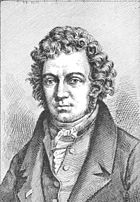
Electromagnetism is a branch of physics involving the study of the electromagnetic force, a type of physical interaction that occurs between electrically charged particles. The electromagnetic force usually exhibits electromagnetic fields such as electric fields, magnetic fields, and light and is one of the four fundamental interactions (commonly called forces) in nature. The other three fundamental interactions are the strong interaction, the weak interaction, and gravitation.[1]

Lightning is an electrostatic discharge that travels between two charged regions.
The electromagnetic force plays a major role in determining the internal properties of most objects encountered in daily life. Ordinary matter takes its form as a result of intermolecular forces between individual atoms and molecules in matter, and is a manifestation of the electromagnetic force. Electrons are bound by the electromagnetic force to atomic nuclei, and their orbital shapes and their influence on nearby atoms with their electrons is described by quantum mechanics. The electromagnetic force governs the processes involved in chemistry, which arise from interactions between the electrons of neighboring atoms.
There are numerous mathematical descriptions of the electromagnetic field. In classical electrodynamics, electric fields are described as electric potential and electric current. In Faraday's law, magnetic fields are associated with electromagnetic induction and magnetism, and Maxwell's equations describe how electric and magnetic fields are generated and altered by each other and by charges and currents.
The theoretical implications of electromagnetism, particularly the establishment of the speed of light based on properties of the "medium" of propagation (permeability and permittivity), led to the development of special relativity by Albert Einstein in 1905.
Although electromagnetism is considered one of the four fundamental forces, at high energy the weak force and electromagnetic force are unified as a single electroweak force. In the history of the universe, during the quark epoch the unified force broke into the two separate forces as the universe cooled.
History of the theory

Hans Christian Ørsted.
- Electric charges attract or repel one another with a force inversely proportional to the square of the distance between them: unlike charges attract, like ones repel.
- Magnetic poles (or states of polarization at individual points) attract or repel one another in a manner similar to positive and negative charges and always exist as pairs: every north pole is yoked to a south pole.
- An electric current inside a wire creates a corresponding circumferential magnetic field outside the wire. Its direction (clockwise or counter-clockwise) depends on the direction of the current in the wire.
- A current is induced in a loop of wire when it is moved toward or away from a magnetic field, or a magnet is moved towards or away from it; the direction of current depends on that of the movement.

André-Marie Ampère

Michael Faraday

James Clerk Maxwell
This unification, which was observed by Michael Faraday, extended by James Clerk Maxwell, and partially reformulated by Oliver Heaviside and Heinrich Hertz, is one of the key accomplishments of 19th century mathematical physics. It has had far-reaching consequences, one of which was the understanding of the nature of light. Unlike what was proposed by electromagnetic theory of that time, light and other electromagnetic waves are at present seen as taking the form of quantized, self-propagating oscillatory electromagnetic field disturbances called photons. Different frequencies of oscillation give rise to the different forms of electromagnetic radiation, from radio waves at the lowest frequencies, to visible light at intermediate frequencies, to gamma rays at the highest frequencies.
Ørsted was not the only person to examine the relationship between electricity and magnetism. In 1802, Gian Domenico Romagnosi, an Italian legal scholar, deflected a magnetic needle using a Voltaic pile. The factual setup of the experiment is not completely clear, so if current flew across the needle or not. An account of the discovery was published in 1802 in an Italian newspaper, but it was largely overlooked by the contemporary scientific community, because Romagnosi seemingly did not belong to this community.[2]




0 Comments